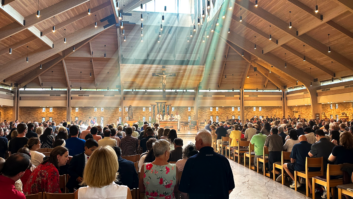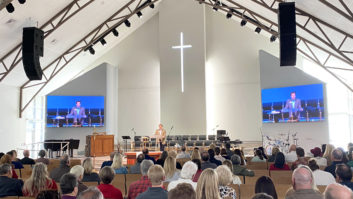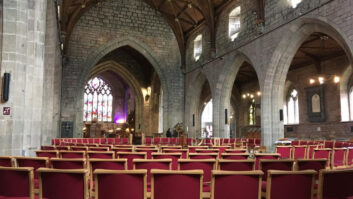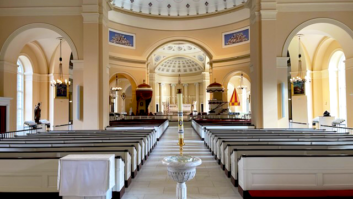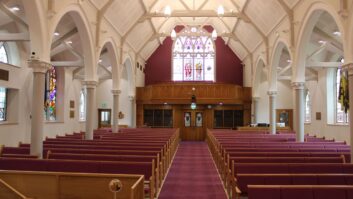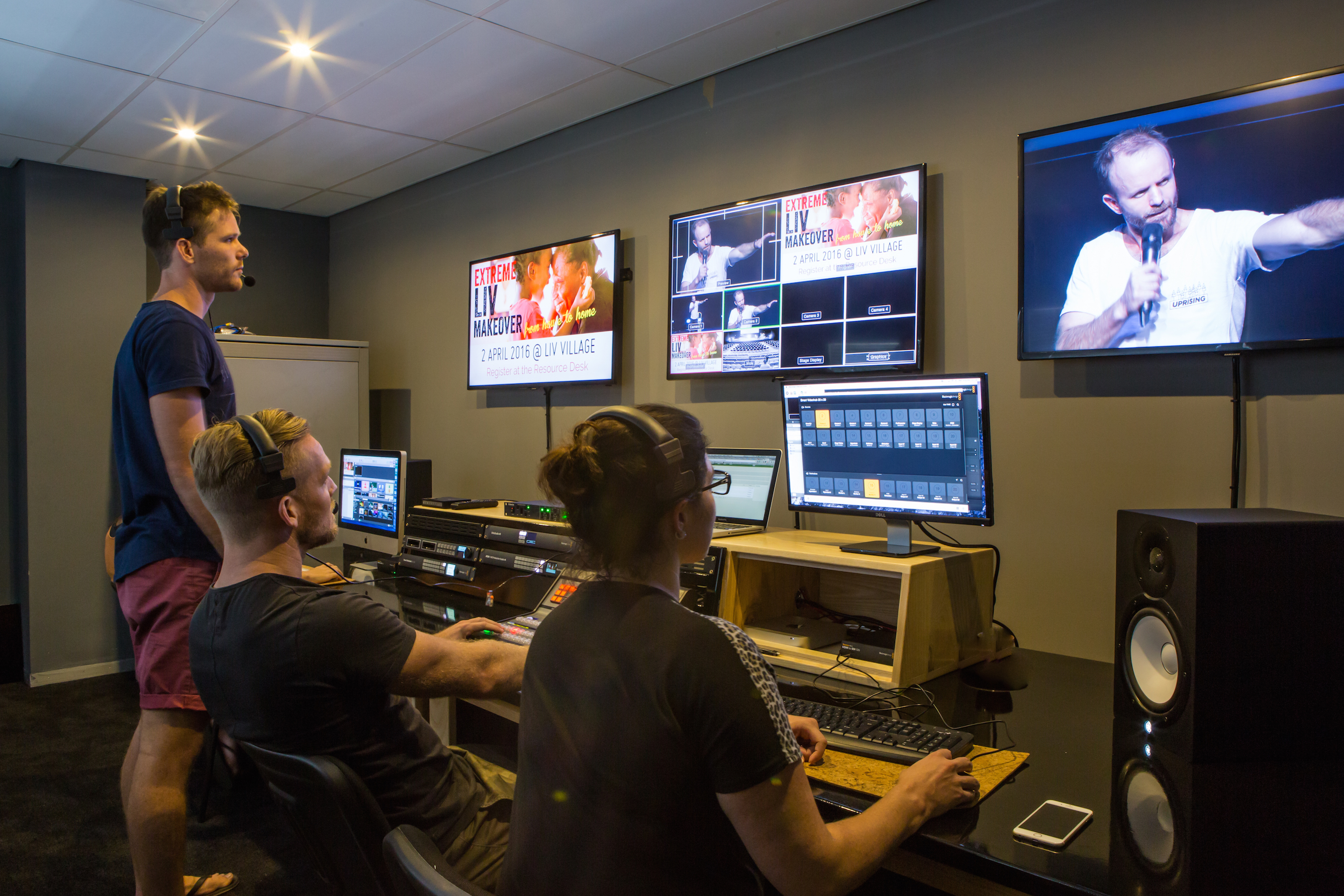
Previously we revealed the ways houses of worship are utilising AV tech to spread the word; here Steve Montgomery reports on the staffing issues that occur from mainly using volunteers with limited technical expertise to operate sophisticated systems and the added importance this places on a system’s usability.
One of the major problems in operating sophisticated AV equipment lies in the lack of dedicated staff. Most churches have a team of volunteers that manages and operates equipment. While enthusiastic, most have limited technical expertise and training, which limits the effectiveness of the systems. Ellis comments: “There may be several services on the main worship days and volunteer teams will double up, handling more than one service each. This can be effective, and even more so if presets are set up on digital desks. However the equipment also has to be used for services, such as funerals, for which the team is unavailable. It must, therefore be simple to operate and be suitable for smaller, irregular occasions.”
All religions use a similar set of core devices within the main area, particularly radio microphones and steerable speakers. In many cases the driving factor for AV implementation comes from the leadership, sometimes with guidance from the church hierarchy. However technical understanding and vision of what is possible is often missing. As Luke Mahler-Hausen, AV and live business development manager, Blackmagic Design points out: “It’s the leaders themselves who instigate a move to install or upgrade AV systems. People may have seen equipment in use when they visit other houses of worship and will take advice from those. They may take their steer from a larger house of worship with more extensive AV systems.”
Technical advice is crucial in this sector, if houses of worship are to avoid expensive mistakes, however in many cases opinions are sought internally, rather than from knowledgeable consultants and system integrators. And, of course, cost is an issue. These have often led to delays and setbacks. Says John Ellis, regional sales manager of the systems group at Shure Distribution: “Unfortunately, those responsible for buying equipment will act on advice gleaned internally first, then be ‘sold to’ by external salespeople before finally turning to professional installers who can design a system to meet their needs; which can be an expensive procedure. The skill in specifying a system that extends a service beyond four walls is something that specialists and consultants offer, but is rarely found in small religious groups.”
Service streams
Streamit has developed a lucrative product and market for streaming church services within the Netherlands, but has little success selling it elsewhere. “Dedicated transmitters and receivers allow the elderly and housebound to receive live services in their homes via broadband or dial-up connections,” explains Johan van der Stoel, business development manager. “Here, the church subsidises the cost of the receiver, but in other countries this is not the case. Personal computers connected to the internet can be used but these are not always available to, or simple enough to operate by, the older generation. Other mechanisms of streaming church services via video are also problematic as the cost and complexity of supporting a stream that peaks at a particular time on a particular day can be too much for many churches.”
While congregations readily accept AV in houses of worship, and many organisations are coping with the specification, installation and operation of it, there is still some way to go in reducing the complexity and cost while improving simplicity and knowledge among decision-makers to make it as successful in the large majority of small to mid-sized facilities around the world.
Case study: Mosque brings in satellite TV feeds
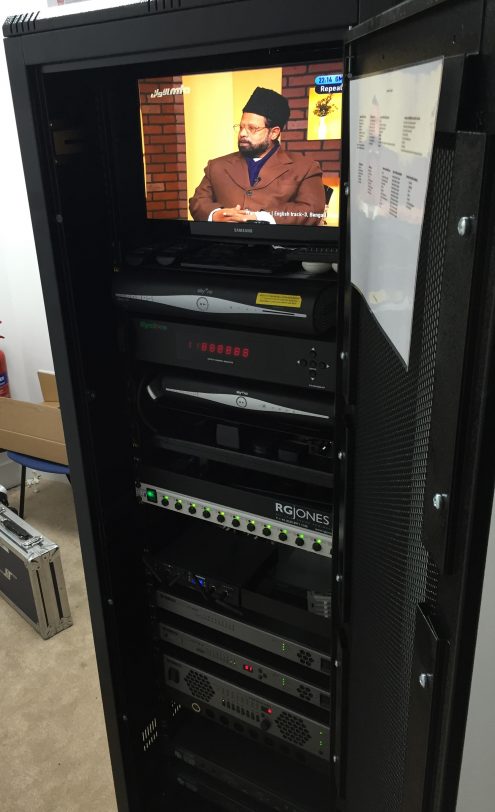
RG Jones Sound Engineering recently designed and installed a distributed AV system for a new-build house of worship in Leicester. It chose a complete Yamaha solution for Baitul Ikram Mosque, the new home for the Ahmadiyya Muslim community (AMA) in the UK East Midlands. In addition to the main prayer hall, the complex also includes a multipurpose hall, meeting room, office, crèche, library, kitchen and entrance/foyer area.
As well as relaying sermons from the mosque’s main prayer hall, a key requirement of the zoned system was incoming and outgoing broadcast feeds.
“The incoming satellite feeds are from the AMA’s own Sky TV station, MTA International,” explains RG Jones project engineer Jeff Woodward. “On Fridays the main weekly sermon given by their spiritual leader, His Holiness Mirza Masroor Ahmad Khalifatul Masih V, is transmitted from their main mosque in Morden, south London. There are two audio channels, one for English and one for Urdu. The Urdu feed is played out over the PA system in the mosque, with the English feed broadcast via a wireless translation earpiece system.”
www.blackmagicdesign.com
www.rgjones.co.uk
www.shuredistribution.co.uk
www.streamit.eu
